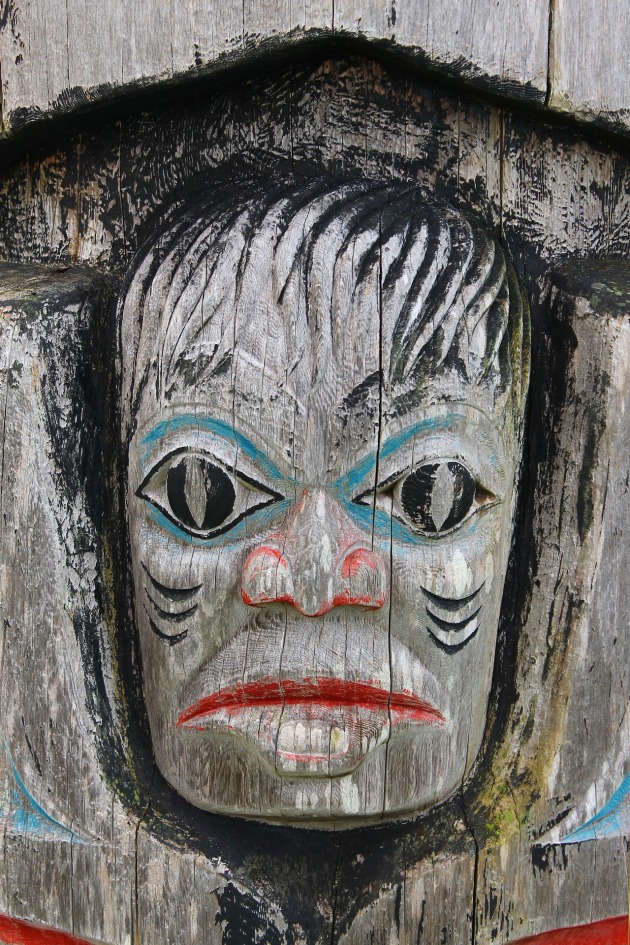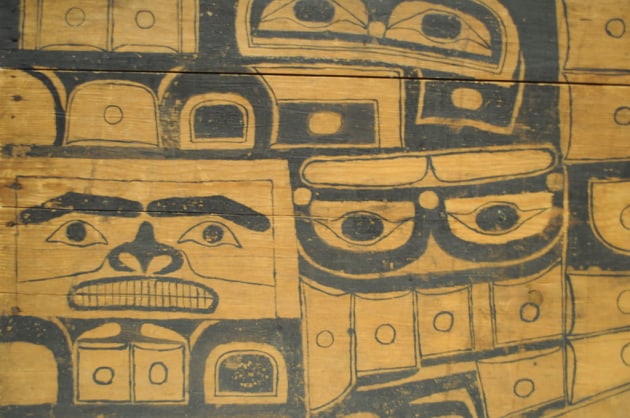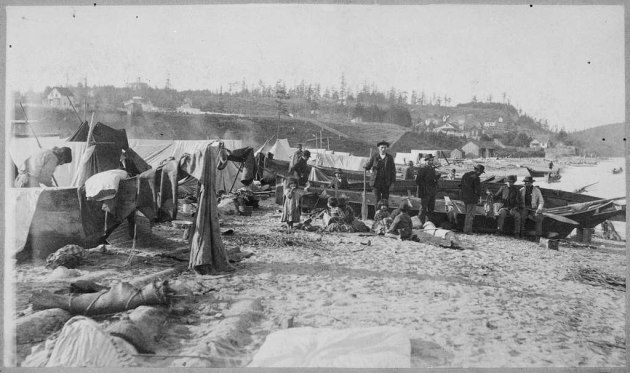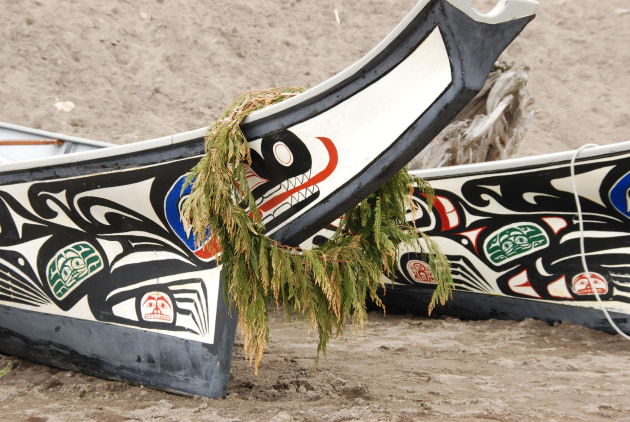


Pacific Northwest Native American people make up a variety of different tribes and nations, each distinct in its culture, traditions, and history. While there are some similarities, such as the significance of salmon and farming practices, the indigenous people of this region cannot be grouped together in an ethnocentric sense.
The Native American tribes of the Pacific Northwest live along the coast of Washington state, Alaska, Oregon, and Northern California. While they also reside in British Columbia, the term Pacific Northwest is mainly used to refer to American geography.
With dense cedar forests, a coastline, and rivers full of fish, the Pacific Northwest became an ideal place for indigenous peoples to settle. Many different nations and tribes emerged, each developing their own rich history, culture, traditions, and beliefs.
Pacific Northwest Native American tribes were different to the tribes of other geographical regions. Like other Indigenous peoples, they had to adapt to their surroundings. The environment in which they lived helped them to develop their diverse culture. Nature was hugely important to these tribes.
Take a look at these three Pacific Northwest Native American tribes that you might want to research with your learners.

The Haida nation is passionate about conserving the environment in which they live: the forest. The cedar and spruce trees adorn pre-glacial land, and the Haida people feel a deep connection to the natural environment that they call home.
Skilled woodworkers and metal designers, the Haida nation built large totem poles carved out of cedar and designed beautiful pieces of jewelry. This is a traditional craft that has survived to this day.

Situated on the Alaskan coast, the Tlingit nation is one of the furthest north. Like many nations and tribes, they place huge importance on family and oral history. Spirituality permeates every facet of life, from eating meals, working, and enjoying hobbies.
With many clans and tribes as part of the Tlingit nation, each member is part of either the Eagle or Raven moieties (large groups.) Each lineage or house group has a large crest that is proudly displayed on totem poles, canoes, wares, and craft creations.
The Tlingit people are traditionally animists. This means that they believe everything, including objects, humans, and creatures, has a spiritual center. Tlingit society also consisted of shamans historically, who cured diseases, predicted the future, promoted productive hunting experiences, and protected Tlingit people from sorcery or witchcraft. While many Tlingit people began to convert to Christianity, the modern Tlingit view is that old and new religions and beliefs can come together to create the Tlingit belief system.

The indigenous Makah people reside on the Washington coast. They refer to themselves as Kwih-dich-chuh-ahtx, which means “people who live between the rocks and the seagulls.” Makah - a name given to them by other people - means “people who are generous with food.”
The Makah people of the Pacific Northwest were skilled hunters on sea and land. This gave them an abundance of food sources. As of the 1999 Census, there are 114 members of the Makah nation, most of which live on the reservation that they own. While ancestral Makah people took part in whaling from cedar canoes, the fishing they take part in now is more commercial with salmon, whiting, and halibut becoming the catch of the day.
Nearly all tribes and nations of the Pacific Northwest valued the salmon. This wasn't just a staple food source, but it also held huge spiritual significance. Many Pacific Northwest Native American tribes actually describe themselves as the Salmon People.

Salmon was caught by many tribes through a variety of fishing techniques. Nets, hook and lines, baskets, and lures were used to capture the fish. The salmon was then put on skewers made from the wood of the cedar tree before being roasted over open fires. Because the winter consisted of more dried and cured salmon, the first catch of the spring was usually received with great celebration and ceremony. Because of its life-sustaining properties, the salmon was a huge spiritual symbol to many Pacific Northwest tribes.
While salmon played a huge role in the diet of the indigenous people of the Northwest, this wasn’t their only food source. Many nations developed sophisticated and effective farming practices. They sustained productive harvests by fertilizing the land, digging, tilling, and harvesting according to seasons. This knowledge was passed down orally through generations to maintain the harvest.
Camassia was the most important crop that they grew. Similar to asparagus, indigenous people would propagate the bulb and plant them in ideal conditions to accompany their rich-protein diet. Blackberries, huckleberries, and sour grapes were also enjoyed.
Northwest Native American tribes also hunted on land as well as at sea. They often ventured into the dense cedar and spruce forests to hunt for deer, elk, and moose. The diet was diverse and healthy.
While we cannot group Pacific Northwest indigenous people into one entity because of their distinct cultures, similarities can be found in their traditions such as art and music.
Totem poles were crafted by many tribes that resided near forests rich in cedar and spruce. These ornate carvings were often in competition with one another and could depict many different spiritual symbols, heraldic motifs, masks, and animals.
Many of these totem poles, as well as other pieces of art and carvings, were ways of telling stories and communicating history, traditions, and messages to others. Totem poles, in particular, allowed indigenous people to show their ties to the land through their carvings.
While some artwork was purely for pleasure and aesthetic delight, other crafts and art had a more practical purpose. For example, many Native people of the Pacific Northwest would make clothing, tools, hunting apparatus, and cooking utensils. These were often adorned with the symbols specific to the tribe.
One common factor between tribes was the significance of the drum. These were often created using wood and animal hides. Some tribes created different types of drums, such as those with rattles, box drums, and additional whistles.
Used mainly in celebrations or at festivals, the drums would accompany a song of relatively slow tempo. While dancing could accompany the drumbeat, the songs were usually to signify and demonstrate the tribal ties to the land. As such, the spiritual nature of the music had to honor and respect the Earth.
Some nations enjoyed singing - mainly in groups. While there were sometimes solo parts, these were usually just the first line of a song. When used as part of a marriage celebration or festival, people would often sing and dance together. Songs are seen as a commodity, to be shared or sold. However, the most sacred and personal songs are often kept within tribes and families.
The potlatch is a festival that is specific to those nations of the Pacific Northwest. It historically involved a leader demonstrating his wealth by giving wealth away. They were often held to compete with other tribes. Who could hold the most elaborate potlatch and give away the most? There were kudos and status to be found in holding the most gift-giving potlatch.
Often, potlatches were held as a form of celebration or commemoration. For example, welcoming a new chief, a marriage, an initiation ceremony, or the funeral of a significant tribe member. The chief would give food, gifts, and other items to guests to show off the wealth within a clan or tribe. If the gifts were accepted, then this showed approval of the chief.
Large feasts always played a significant part in the potlatch. People would consume copious amounts of food while songs, music, and dancing would be encouraged.
Potlatches were criminalized at one point, but have since been reintroduced in many Pacific Northwest Native American tribes. They are now used in some communities to discuss laws, resource management, organize treaties, and establish governmental business. The Haida nation, for example, is committed to potlatch law.

When looking at Pacific Northwest Native Americans for kids, you need some fun and engaging facts to hook your learners. Read on to find out more.
The European colonization of America meant that the introduction of new diseases, amongst other things, resulted in the loss of nearly 90% of Native American populations in some communities and nations. However, this doesn't mean that the Native American culture of the Pacific Northwest is diminished.
With the focus on oral history and oratory, the traditions, history, and customs of tribes are very much alive. Many tribes and nations live on reservations across the Pacific Northwest, however many people with Pacific Northwest Native American heritage live across the United States.
The Haida and Heiltsuk nations revived their traditional cedar canoe building techniques in the 1980s. These canoes now take part in the Tribal Canoe Journeys every year. This is an event that brings families together while celebrating heritage and culture.
We hope you’ve enjoyed reading about the rich diversity of the Pacific Northwest Native American tribes, nations, and clans. And don’t forget to explore this facet of history in November, when Native American Heritage Month is celebrated across America.
If you enjoyed this Teaching Wiki about the Native People of the American Northwest Coast, then you might like some of these other Wiki's useful: